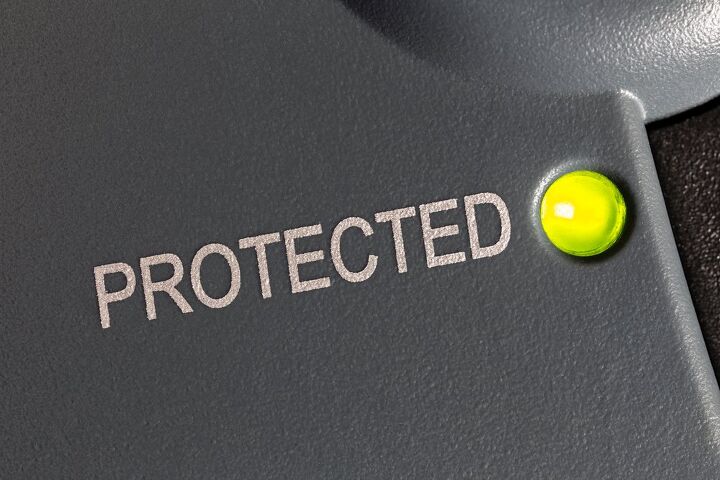Is Surge Protection Required By Code?

The most common causes of electrical surges come from internal sources within your home, which can send hundreds of thousands of volts through your system at once. When the voltage goes up throughout your house at this velocity, all sorts of things can happen- including fires from overheated wires to tripped breakers and short-circuiting outlets.
So, are you required to have surge protection installed by code?
As of 2020, the National Electric Code requires surge protection to be installed in all residential and commercial buildings. In newer homes, it’s likely already been taken care of; otherwise, an electrician will place the SPD next service appointment. If your structure isn’t compliant, you risk facing fines or having to pay for damages incurred by electrical surges.
Continue reading to learn about the purpose of surge protection and if you’re required, by code, to have it. Additionally, this article will cover how surge protection works and what to do if you don’t currently have the feature in your home.
Do You Need to Hire an Electrician?
Get free, zero-commitment quotes from pro contractors near you.

What Does “Required by Code” Mean?
If you’re unfamiliar with the term, we’ll spill the tea.
When something is “required by code,” it usually means that the National Electric Code (NEC) indicates that it’s necessary in order to maintain the safety of your home or business.
In some cases, a state or city may have its own code that includes a similar mandate.
Basically, the “code” has been written to help you stay safe from electrical fires and other hazards. So when the NEC states that surge protection is one of these things you must do, it’s no laughing matter, and you better get the job done.
What Is Surge Protection?
Surge protection is a great way to prevent power surges from causing extensive damage to your home.
These devices can be installed into your main electrical panel box and applied throughout the wires in your home. Depending on the size of your house, you may need more than one surge protector.
How Does Surge Protection Work?
In order to reduce damage from fires due to voltage fluctuations, the surge protector works to divert the incoming voltage to other channels. If the current is higher than usual, then it will be lowered down to a safe level before being transferred into your home.
Otherwise, smaller devices like TVs, computers, and microwaves could get zapped.
The main causes for an electricity surge include:
- Faulty wiring
- Lightning strikes
- Electrical overload from devices inside of your home
- Bad appliances
- Tripped circuit breakers
Is Surge Protection Required by Code?
Is this type of protection required by law (or code)?
As of 2020, the National Electric Code requires that a Type 1 or Type 2 surge protection device (SPD) be installed in all dwelling units that require future service.
This means that any new or old homes or buildings must have a surge protection device installed. Newer homes will have them put in during the construction phase, while older homes need to have them placed next time an electrician comes for a service replacement or upgrade.
As of now, all you’ll need to do is check with your local building department regarding what they require for the structure you own. If the information isn’t readily available online- then give them a call and ask!
What If You Don’t Have Surge Protection in Your Home?
Are there any repercussions if you don’t have surge protection installed in your home? In a word- yes.
If you want to ensure that your home is compliant with the NEC 2020 Code, then you’ll need to have surge protection put in by a professional as soon as possible. Otherwise, your structure will not pass inspection and may be held accountable for any damages or fires resulting from power surges in your home.
Additionally, in a worst-case scenario, you could be fined.
Benefits of Whole-House Surge Protection
As an investment, whole-house surge protection comes with many perks.
For instance, the devices are trusted by insurance providers because they help minimize damage due to power surges. This leads to lower premiums over time and reduces fire hazards in the home.
Other benefits include:
- Improved energy efficiency
- Protection for devices and appliances inside of the house
- Peace of mind knowing that you’re keeping your family safe
- Reduction of weather-related power surges (e.g., lightning strikes)
With these advantages in mind, you should seriously consider getting this important feature put in place if it isn’t already.
Related Questions
Do surge protectors prevent fires?
In most cases, they can.Surge protectors are able to keep the voltage from fluctuating above a safe level. Without this protection in place, fires from devices or appliances can happen without warning.
What is a surge protector vs. a power strip?
The main difference between a surge protector and a power strip is their purpose.A power strip may allow you to plug in various devices, but it won’t necessarily guard against power surges resulting from external factors. Surge protectors are installed in your main electrical panel box and are designed for this task alone.
When do surge protectors go bad?
Surge protectors should be replaced every five or so years.Modern surge protection devices (SPDs) like the ones used in homes protect against current and voltage fluctuations caused by appliances, lightning strikes, and other sources.After a few years, they wear out, and this is especially true if your home has experienced several outages over the years.
Do You Need to Hire an Electrician?
Get free, zero-commitment quotes from pro contractors near you.

The Bottom Line
Surge protection is not only required by code, but it also offers many benefits to homeowners.
It can help reduce weather-related power surges (e.g., lightning strikes), prevent fires from devices or appliances without warning, and save you money in the long run with lower insurance premiums over time.
If your home doesn’t have a surge protection device already installed, contact an electrician for installation as soon as possible! Otherwise, you risk getting fined or not passing an upcoming inspection.

Emily is a copywriter with over five years of experience in crafting content for the home renovation and remodeling industry. She loves house projects, whether it be painting a room or tweaking small design elements to transform a space. Her favorite aesthetic is french modern because of its clean lines and airy feeling! When not writing, Emily loves to travel and check out architectural details all over the world.
More by Emily Carr













![10 Best Zero Turn Mowers – [2022 Reviews & Ultimate Buyer's Guide]](https://cdn-fastly.upgradedhome.com/media/2023/07/31/9070522/10-best-zero-turn-mowers-2022-reviews-ultimate-buyer-s-guide.jpg?size=350x220)













